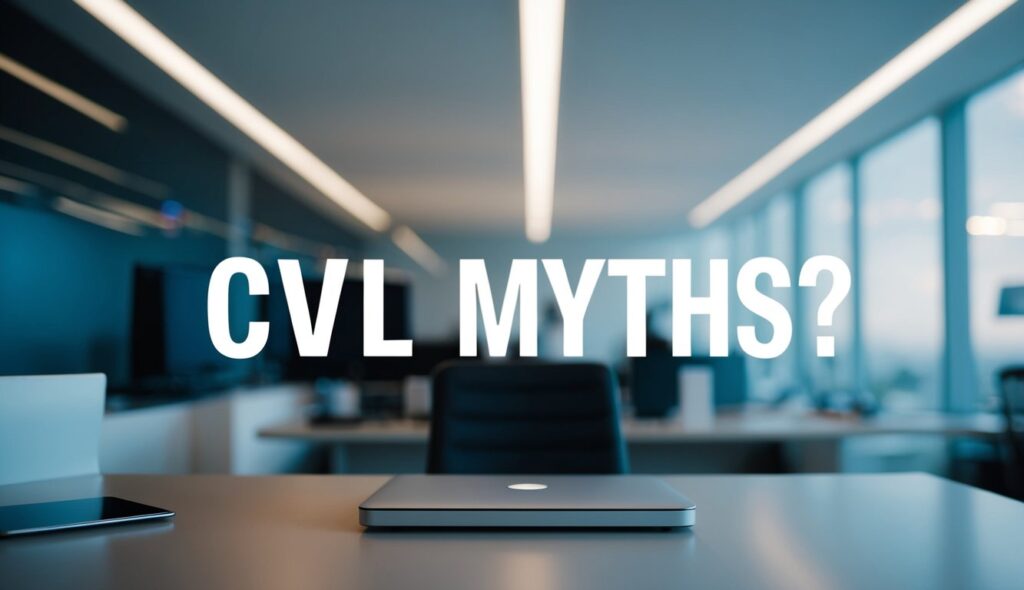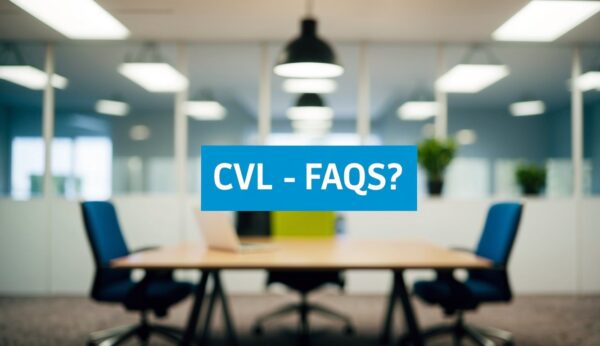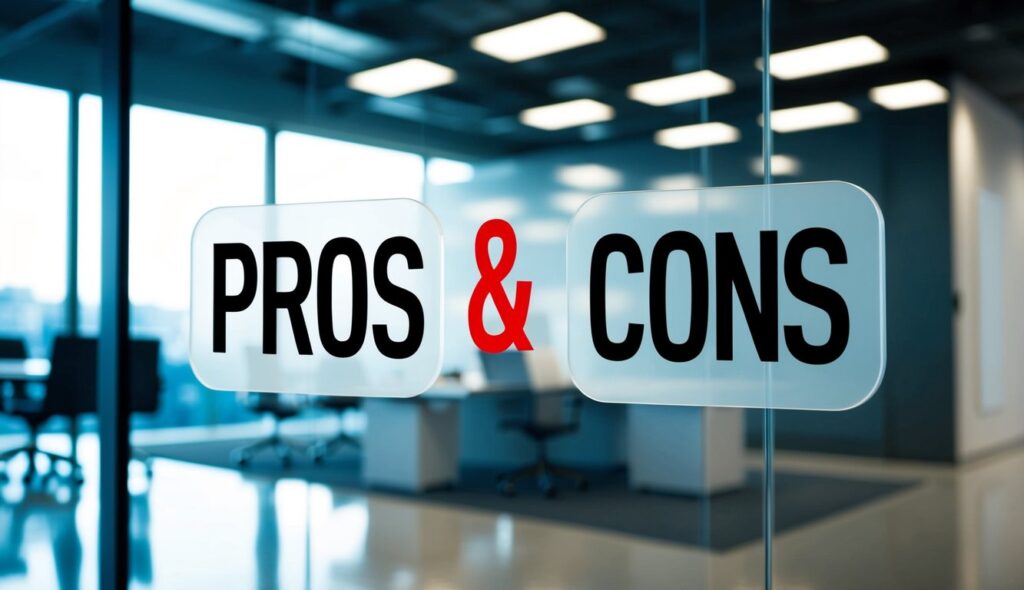CVL vs Company Dissolution: Key Factors to Consider When Winding Up Your Business
What Is Creditors’ Voluntary Liquidation (CVL)?
Creditors’ Voluntary Liquidation is a formal process for insolvent companies to wind up their affairs. It allows directors to take control of the liquidation process whilst fulfilling their duties to creditors. It is a legal procedure initiated by company directors when they recognise the business is insolvent and unable to pay its debts. The primary purpose of a CVL is to close the company in an orderly manner, ensuring fair treatment of creditors.
In a CVL, directors voluntarily choose to liquidate the company’s assets and distribute the proceeds to creditors. This process helps protect creditors’ interests and allows for a more controlled dissolution compared to forced liquidation.
CVL offers several benefits:
-
- It demonstrates directors’ responsibility in addressing financial difficulties
- It can help avoid personal liability for wrongful trading
- It provides a structured approach to settling outstanding debts
When to Opt for a CVL
You should consider a CVL when your company:
-
- Is insolvent and unable to pay its debts as they fall due
- Has more liabilities than assets
- Faces mounting pressure from creditors
- Has exhausted all options for rescue or turnaround
- Opting for a CVL can be appropriate if:
- Your company’s financial situation is unlikely to improve
- You want to avoid compulsory liquidation by creditors
- You aim to fulfil your duties as a director and minimise potential personal liability
- It’s crucial to seek professional advice from an insolvency practitioner to assess your company’s specific circumstances before proceeding with a CVL.
Key Steps in the CVL Process
-
- Director’s Meeting: You and other directors meet to pass a resolution for voluntary liquidation.
- Appointment of Liquidator: An insolvency practitioner is appointed as the liquidator.
- Creditors’ Meeting: A meeting is called to inform creditors of the company’s situation and the proposed liquidation.
- Asset Realisation: The liquidator sells the company’s assets to generate funds for creditors.
- Creditor Claims: Creditors submit claims for monies owed.
- Distribution: Available funds are distributed to creditors in order of priority.
- Final Report: The liquidator prepares a final report detailing the liquidation process.
- Dissolution: The company is formally dissolved and removed from the Companies House register.
Throughout the process, you must cooperate fully with the liquidator and provide all necessary information about the company’s affairs.
What Is Company Dissolution?
Company dissolution is a formal process to close a solvent business and remove it from the Companies House register. This procedure allows directors to wind up operations in an orderly manner when the company is no longer needed. Also known as striking off, is the legal termination of a limited company’s existence. It’s a voluntary process initiated by directors to formally close a solvent business that has ceased trading or is no longer required.
The primary purpose of dissolution is to provide a straightforward, cost-effective way to end a company’s life. This method is suitable for businesses with no outstanding debts or legal obligations.
Dissolution allows directors to tie up loose ends, settle accounts, and distribute any remaining assets to shareholders before closing the company for good.
When to Opt for Dissolution
You might choose dissolution when your company:
-
- Has stopped trading and has no plans to resume
- Is dormant with no significant assets or liabilities
- Has fulfilled its purpose and is no longer needed
- Wishes to restructure or merge with another entity
- Dissolution is not appropriate if your company:
- Has outstanding debts or creditors
- Is facing legal action or disputes
- Has assets that need to be realised and distributed
- In these cases, other closure methods like liquidation may be more suitable.
Key Steps in the Dissolution Process
-
- Board Resolution: Directors must agree to dissolve the company and record this decision.
- Settle Debts: Pay off any outstanding liabilities and close company bank accounts.
- Inform HMRC: Notify tax authorities of your intention to close and settle any tax obligations.
- File DS01 Form: Submit the ‘Striking Off Application’ to Companies House.
- Publish Notice: Companies House will publish your dissolution intent in the Gazette.
- Wait for Approval: If no objections are raised within 3 months, your company will be struck off.
- Final Dissolution: Companies House removes your company from the register.
Remember, you must cease all trading activities once you’ve applied for dissolution. Failure to follow proper procedures can result in fines or legal complications.
Key Differences Between CVL and Dissolution
Creditors’ Voluntary Liquidation (CVL) and company dissolution are distinct processes for closing a business. They differ in several crucial aspects, including financial requirements, legal procedures, costs, and directorial responsibilities.
Financial Status of the Company (Insolvent vs Solvent)
CVL is the appropriate route for insolvent companies unable to pay their debts. It involves selling off assets to repay creditors as much as possible.
Dissolution, on the other hand, is suitable for solvent companies with no outstanding debts or liabilities. This process is often used by dormant or non-trading companies.
You must carefully assess your company’s financial position before deciding which path to take. Attempting to dissolve an insolvent company can lead to serious legal consequences.
Legal and Administrative Processes Involved
CVL requires the appointment of a licensed insolvency practitioner who manages the liquidation process. This includes:
-
- Calling creditors’ meetings
- Valuing and selling company assets
- Distributing proceeds to creditors
- Filing necessary reports with Companies House
- Dissolution is a simpler process. You can apply to strike off your company by:
- Completing form DS01
- Paying a small fee
- Publishing a notice in The Gazette
The company is then removed from the Companies House register after a two-month period, provided there are no objections.
Costs Associated with CVL and Dissolution
CVL is generally more expensive due to the involvement of a licensed insolvency practitioner. Costs can vary depending on the complexity of the case but typically range from £3,000 to £8,000 or more. Our full article on CVL costs can is available here: CVL Costs.
Dissolution is significantly cheaper. The fee for striking off a company is currently £10 when filed online or £8 by post.
However, it’s crucial to consider potential hidden costs. Attempting to dissolve an insolvent company can lead to personal liability for directors, resulting in much higher expenses in the long run.
Responsibilities of Directors in Each Process
In a CVL, directors must:
-
- Cooperate fully with the appointed liquidator
- Provide all necessary company information and documentation
- Attend creditors’ meetings if required
- Cease trading and hand over control of the company to the liquidator
- Directors’ responsibilities in dissolution include:
- Ensuring all company debts are settled
- Informing HMRC and other relevant parties
- Closing company bank accounts
- Distributing any remaining assets to shareholders
- In both cases, directors must act in the best interests of creditors and shareholders. Failing to do so can result in personal liability and potential disqualification.
Pros and Cons of CVL and Dissolution
Creditors’ Voluntary Liquidation (CVL) and company dissolution offer distinct paths for closing a business. Each approach has its own set of advantages and disadvantages that directors must carefully weigh.
If you prefer you can simply speak with us and we are happy to offer a Free CVL Consultation – advice@andersonbrookes.co.uk or call on 0800 1804 933 our freephone number (including from mobiles).
Benefits of CVL for Insolvent Companies
CVL provides a structured process for insolvent companies to wind up their affairs. It allows directors to take control of the situation and demonstrate responsibility to creditors. You can protect your reputation by proactively addressing financial difficulties. Key benefits include:
-
- Halting creditor pressure and legal actions
- Orderly closure overseen by a licensed insolvency practitioner
- Potential for directors to buy back assets at market value
- Protection from wrongful trading allegations if handled properly
- Opportunity to start afresh with a new venture
- CVL also ensures all creditors are treated fairly. This can help maintain business relationships for future endeavours.
Drawbacks of CVL: Costs and Compliance
While CVL offers advantages, it comes with certain drawbacks. The process can be costly and time-consuming. You’ll need to consider these factors:
-
- Fees for the appointed liquidator, which can be substantial
- Potential for director disqualification if misconduct is found
- Scrutiny of past business transactions and decisions
- Loss of control over the company’s assets and affairs
- Negative impact on credit rating for future borrowing
- CVL requires full cooperation with the liquidator. You must provide detailed financial records and attend meetings as required. This can be stressful and time-intensive.
Benefits of Dissolution for Solvent Companies
For solvent companies, dissolution can be a simpler and more cost-effective option. This process is suitable when you’ve ceased trading and have no outstanding debts. Advantages include:
-
- Lower costs compared to formal liquidation
- Quicker process, often completed within 3-4 months
- Less scrutiny of company affairs
- Directors retain more control over the closure process
- Easier to reinstate the company if needed within 6 years
Dissolution allows you to close your company without involving an insolvency practitioner. This can be ideal for small businesses or those winding down voluntarily, however there are risks. We are happy to discuss your options – call on 0800 1804 933 – without a cost or obligation.
Risks of Dissolution: Creditor Reinstatements
Despite its simplicity, dissolution carries risks if not handled correctly. The main concern is the possibility of creditor reinstatements.
Key risks to consider:
-
- Creditors can apply to restore the company up to 20 years later
- Directors may be held personally liable for undisclosed debts
- Failure to notify all creditors can lead to legal challenges
- Assets not properly dealt with can cause complications
- HMRC may investigate if tax affairs are not in order
To mitigate these risks, ensure all liabilities are settled before applying for dissolution. Notify all stakeholders, including HMRC, banks, and suppliers. Keep thorough records of the closure process for future reference.

Factors to Consider When Choosing Between CVL and Dissolution
When deciding between a Creditors’ Voluntary Liquidation (CVL) and company dissolution, several key factors come into play. These include the impact on various stakeholders, future business aspirations, and potential long-term consequences.
Impact on Creditors and Employees
A CVL provides a structured approach to settling debts and addressing employee concerns. Creditors have a chance to recover some of their money through the liquidation process. You’ll need to appoint a licensed insolvency practitioner to manage the CVL, ensuring fair treatment of creditors.
Employees benefit from a more orderly wind-down, with potential access to redundancy payments and other entitlements.
Dissolution, on the other hand, may leave creditors and employees in limbo. There’s a risk of creditors pursuing legal action if they feel their interests haven’t been properly addressed.
Consider the following:
-
- Number and types of creditors
- Total debt amount
- Employee count and their entitlements
- Likelihood of creditor legal action
Future Business Plans and Director Liabilities
Your future business plans play a key role in this decision. A CVL can offer a cleaner slate if you’re considering starting a new venture. It demonstrates responsible handling of the current company’s affairs, which may be viewed favourably by future business partners or investors.
In terms of director liabilities, a CVL can provide more protection. The insolvency practitioner thoroughly investigates the company’s affairs, potentially shielding you from accusations of wrongful trading.
Dissolution might seem simpler, but it can leave you exposed to future claims. Creditors can apply to restore the company to the register, potentially leading to personal liability issues.
Key considerations:
-
- Your plans for future business ventures
- Potential personal guarantees on company debts
- Risk of wrongful trading allegations
Long-Term Legal and Financial Implications
The long-term implications of your choice can be significant. A CVL provides a clear end to the company’s affairs, with debts written off once the process is complete. This can offer peace of mind and a definitive closure.
Dissolution may seem less costly initially, but it can lead to ongoing uncertainty. Creditors might pursue you personally for unpaid debts, and there’s a risk of the company being restored to the register years later.
Consider these long-term factors:
-
- Potential for future legal challenges
- Impact on your credit rating
- Closure and finality of the process
- Cost implications (immediate vs potential future costs)

Misconceptions About CVL and Dissolution
Misunderstandings about Creditors’ Voluntary Liquidation (CVL) and company dissolution can lead to poor decision-making for business owners. Clarifying these misconceptions is crucial for making informed choices when closing a company. See our specific CVL Myths.
Dissolution as an Escape from Debt: Legal Risks
Dissolving a company is not a way to escape debts. Many directors mistakenly believe they can simply strike off their company and walk away from financial obligations. This is a dangerous misconception.
If you dissolve a company with outstanding debts, creditors can apply to have it restored to the register. You may then face personal liability for those debts. Additionally, dissolving an insolvent company is illegal and can result in director disqualification.
Proper CVL procedures offer protection from these risks. They ensure all creditors are treated fairly and reduce the likelihood of personal liability or legal action against directors.
CVL as a Last Resort: Potential Benefits for Directors
Contrary to popular belief, CVL isn’t always a last resort or entirely negative outcome. It can offer several advantages for directors of struggling companies:
-
- Protection from wrongful trading allegations
- Orderly wind-down of business affairs
- Professional handling of creditor negotiations
- Potential for directors to buy back assets
CVL allows you to take control of the liquidation process rather than facing a compulsory liquidation. It demonstrates responsibility and can preserve your business reputation. You may also find it easier to start a new venture in the future, as CVL is viewed more favourably than compulsory liquidation by creditors and suppliers.
Professional Advice for Making the Right Choice
Seeking expert guidance is crucial when deciding between a Creditors’ Voluntary Liquidation (CVL) and company dissolution. Professional advice can help you navigate legal requirements, understand financial implications, and choose the most suitable option for your business.
The Role of Insolvency Practitioners in CVL and Dissolution
Insolvency practitioners play a vital role in both CVL and dissolution processes. In a CVL, we assess your company’s financial situation, liaise with creditors, and manage the liquidation process. For dissolution, we ensure you meet all legal requirements before closing your business.
These professionals:
-
- Evaluate your company’s assets and liabilities
- Advise on potential consequences for directors
- Handle negotiations with creditors
- Ensure compliance with insolvency laws
Our expertise helps protect you from personal liability and ensures a smooth closure process.
How Early Advice Can Prevent Legal and Financial Issues
Seeking professional advice early can help you avoid costly mistakes and legal complications. Early intervention allows you to:
-
- Identify potential alternatives to closure
- Understand your obligations to creditors and employees
- Plan for tax implications of closure
- Protect your personal assets
By consulting experts before your financial situation deteriorates, you may find solutions to keep your business afloat or minimise losses during closure.
Tailored Support from Anderson Brookes
Anderson Brookes offers personalised guidance for businesses considering CVL or dissolution. Our team of experts:
-
- Analyses your unique financial situation
- Explains the pros and cons of each closure option
- Helps you understand the impact on shareholders and creditors
- Guides you through the entire process, from decision-making to completion
With our support, you can make an informed choice that aligns with your business goals and legal obligations. Anderson Brookes ensures you have all the necessary information to navigate the complexities of company closure confidently.
Why Anderson Brookes Is the Right Partner
Anderson Brookes offers expert guidance for companies considering liquidation or dissolution. Our professional team provides tailored advice to help you navigate these complex processes efficiently and compliantly.
Expertise in Managing CVLs and Dissolutions
Anderson Brookes specialises in voluntary liquidations and company dissolutions. Our team has extensive experience handling both simple and complex cases across various industries. We stay up-to-date with the latest regulations and best practices to ensure your business closure follows all legal requirements.
Our liquidators work closely with you to:
-
- Assess your company’s financial situation
- Explain the pros and cons of CVL vs dissolution
- Manage creditor negotiations
- Handle all necessary paperwork and filings
This expertise allows for a smooth, stress-free process tailored to your unique circumstances.
Proven Success in Complex Cases
Anderson Brookes has a track record of successfully managing challenging liquidations and dissolutions. We’ve helped companies with:
-
- Multiple creditors and complex debt structures
- Cross-border operations and assets
- Ongoing legal disputes or investigations
- Valuable intellectual property requiring protection
Client testimonials praise our professionalism, efficiency and clear communication throughout the process!
CVL Google Reviews

&

Free Consultations to Guide Your Decision
You can book a no-obligation consultation with Anderson Brookes to discuss your situation. During this meeting, our experts will:
-
- Review your company’s financial position
- Explain CVL and dissolution options in detail
- Answer your questions about the process
- Provide an initial recommendation
This free service helps you make an informed decision about the best path forward. You’ll gain clarity on timelines, costs and potential outcomes before committing to any course of action.

Frequently Asked Questions
Understanding and preparing for business closure involves understanding key distinctions between liquidation and dissolution processes. These CVL FAQs address common queries about voluntary and compulsory liquidation, dissolution options, and the roles of various parties involved.
What are the key distinctions between liquidation and the dissolution of a company?
Liquidation involves selling off a company’s assets to pay creditors before closing the business. It’s typically used for insolvent companies. Dissolution, on the other hand, is the formal closure of a solvent company that has ceased trading and settled all debts.
Liquidation requires appointing a liquidator to manage the process. Dissolution can often be handled directly by directors through Companies House.
How does voluntary liquidation contrast with compulsory liquidation in terms of company closure?
Voluntary liquidation is initiated by the company’s directors and shareholders. It offers more control over the process and timing. Compulsory liquidation is forced by creditors through a court order.
In voluntary liquidation, directors choose the liquidator. Compulsory liquidation involves the Official Receiver taking initial control.
Can a company be dissolved without undergoing liquidation, and if so, under what circumstances?
Yes, a company can be dissolved without liquidation if it’s solvent and has ceased trading. This is typically done through a voluntary strike-off process.
To qualify, the company must not have traded, changed names, or engaged in any business activity in the last three months.
What are the implications for a business when choosing between dissolution and winding up?
Dissolution is generally quicker and less costly for solvent companies. It leaves a cleaner record, which may be beneficial for directors’ future ventures.
Winding up through liquidation is necessary for insolvent companies. It ensures proper distribution of assets to creditors and can protect directors from allegations of wrongful trading.
Is dissolution always the first step in settling a partnership’s accounts when it is dissolved?
No, dissolution isn’t always the first step in settling partnership accounts. The process typically begins with ceasing business operations and notifying stakeholders.
Partners then conduct a full accounting, settle debts, and distribute remaining assets. Formal dissolution often comes after these steps are completed.
In the context of winding up a company, how do the roles and responsibilities of Companies House come into play?
Companies House plays a crucial administrative role in the winding-up process. They receive and record important documents related to the liquidation or dissolution.
This includes notices of appointment of liquidators, final meetings, and the ultimate striking off of the company from the register.





